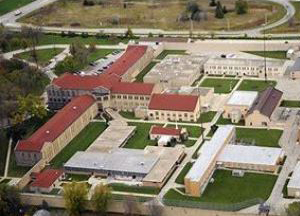By Kris Leonhardt
Editor-in-chief
Continued from previous edition: click here
In July 1979, the reformatory was renamed the “Green Bay Correctional Institution” in keeping with the “more modern, rehabilitative” approach of prison reformation.

In 1981, the facility was still dealing with overcrowding issues and an expansion plan to accommodate an additional 75 inmates was developed.
However, the $3.1 million in bonding was later reallocated for a state office project in Milwaukee, and the state entered a contract with the state of Minnesota to transfer 300 inmates from Waupun and Green Bay to prisons in Stillwater and St. Cloud, Minnesota.
In late 1982, the state developed a two-phase modernization plan for the facility.
Phase No. 1 consisted of a $5.6 million housing unit for 144 inmates on vacant land east of the food services building in the developing budget.
Phase No. 2 would replace the north and south halls with new housing units using funding from the 1985-87 and 1987-89 budgets.
But the project was met with opposition from Allouez officials and other legislators.
The Division of Corrections turned to the construction of new correctional institutions in Oshkosh, Portage and Milwaukee, as the facilities in Green Bay and Waupun looked at a reduction in their prison populations and an uncertain future.
That unsettled sentiment has resonated in previous months, with the future of the facility and a possible closing in discussions at the state and local levels.
However, Gov. Tony Evers’ recent release of a proposed budget and capital expenditures did not include money to close the historic correctional institution.
Instead, the report offered up $30 million for upgrades to the facilities.
The upgrades include the replacement of an aging roof at a little over $3 million, a new health services unit at about $25 million and a $4.2 million fiber optic cable upgrade.
The current health services unit is now being used to house inmates, offering a larger capacity for the facility.
The proposal will first go to the state building commission on March 23 for consideration. From there, the recommendations will head to the joint committee on finance.
In 1990, the facility was listed on the National Register of Historic Places, citing its “ominous, heavyset Richardsonian Romanesque” cast mode and two-story semicircular arch, flanked by narrow sidelights reaching toward a “triangular parapet, creating a dramatic focal point.”
“The long cell blocks with ribbons of arched windows extend from the Administration Building like long wings,” the listing notes.
“Steel bars on the windows signal the building’s function. Inside the Administration Building is a spectacular two-story rotunda with a grand double staircase and a richly colored terrazzo floor. Colossal columns support the coffered dome above, and the upper walls bear large murals, most of them painted by inmate E. Hubbard in 1924. Perhaps fantasizing about the freedom of open spaces, Hubbard depicted the Wisconsin Dells, the Rocky Mountains and Mount McKinley.”
